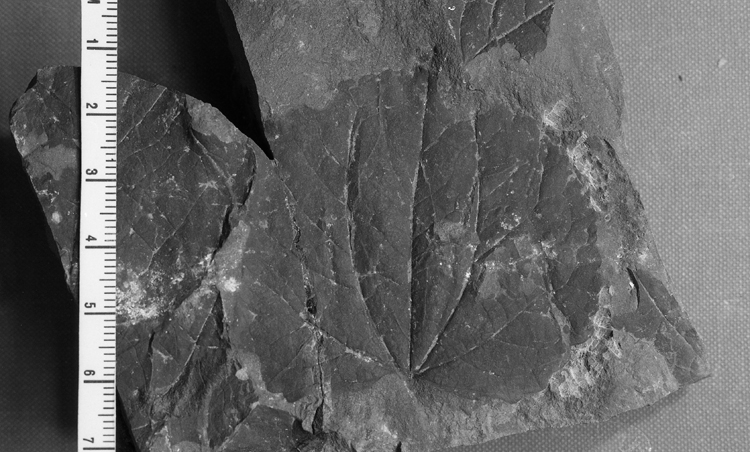Locality
Amaam Lagoon Locality 1
Description
From Moiseeva (2012) (p. 67)
"Leaves simple, entire, size variable (length of lamina 1.5–16.0 cm and width 1.2– 13.0 cm), length-width ratio usually 1:1; medium-sized leaves prevailing in collection change in shape from broadly oval (nearly round) to broad ovate. Less numerous small leaves are of ovate shape. Leaf base usually cordate, decurrently joining petiole, or sometimes truncate. Leaf apex rounded to acute.
Leaf margin crenate to double-crenate entire in basal parts of leaf lamina. In the middle and upper parts, teeth are larger, frequently doubled, up to 0.5 cm high and 0.7 cm wide, with slightly convex apical and basal sides. Their apical side rounded in most cases is truncated or slightly notched in places, with glandules in the middle. Central vein of a tooth terminates at the apex separating two lateral areolae; sinuses deep and rounded. Petiole preserved in some specimens is as long as one third of the leaf blade (up to 2 cm long and 1.5 mm thick when leaf is 5.5 to 6.0 cm long) or longer (over 5 cm when leaf is 7 cm long).
Venation actinodromous with 3 to 7, usually 5 primary veins; the central one and proximal pair of inner veins are most thick. Arcuate inner veins delineate area of ellipsoid or broad cuneate shape. Shorter and thinner outer primary veins deviating laterally from the leaf base are in the loop-forming interlacing with secondary deviations of inner primary veins. Secondary venation festooned brochidodromous venation, secondary branches of primary veins form one or two loopy rows. Semicraspedodromous venation is distinguishable, when basal veins bifurcate near the leaf margin so that the lower branch terminates in a tooth, while the upper one joins the superjacent vein. In the upper third of the leaf blade, two to three pairs of arcuate secondary veins depart from the middle vein at the angle of 35°–40° and join the superjacent secondary veins. The lower pair of secondary veins in turn join the inner primary veins. Tertiary venation opposite- or alternate-percurrent is formed by arcuate tertiary veins orthogonally oriented relative to secondary veins. Polygonal reticulate venation of the fourth order is represented by regular network of pentagonal cells."
Remarks
From Moiseeva (2012) (p. 67)
"Holotype: BIN RAS no. 967/1003; Koryak Upland, Anadyr River, outcrop 81; upper part of the Rarytkin Formation, Danian (Golovneva, 1991, pl. II, fig. 1)."
